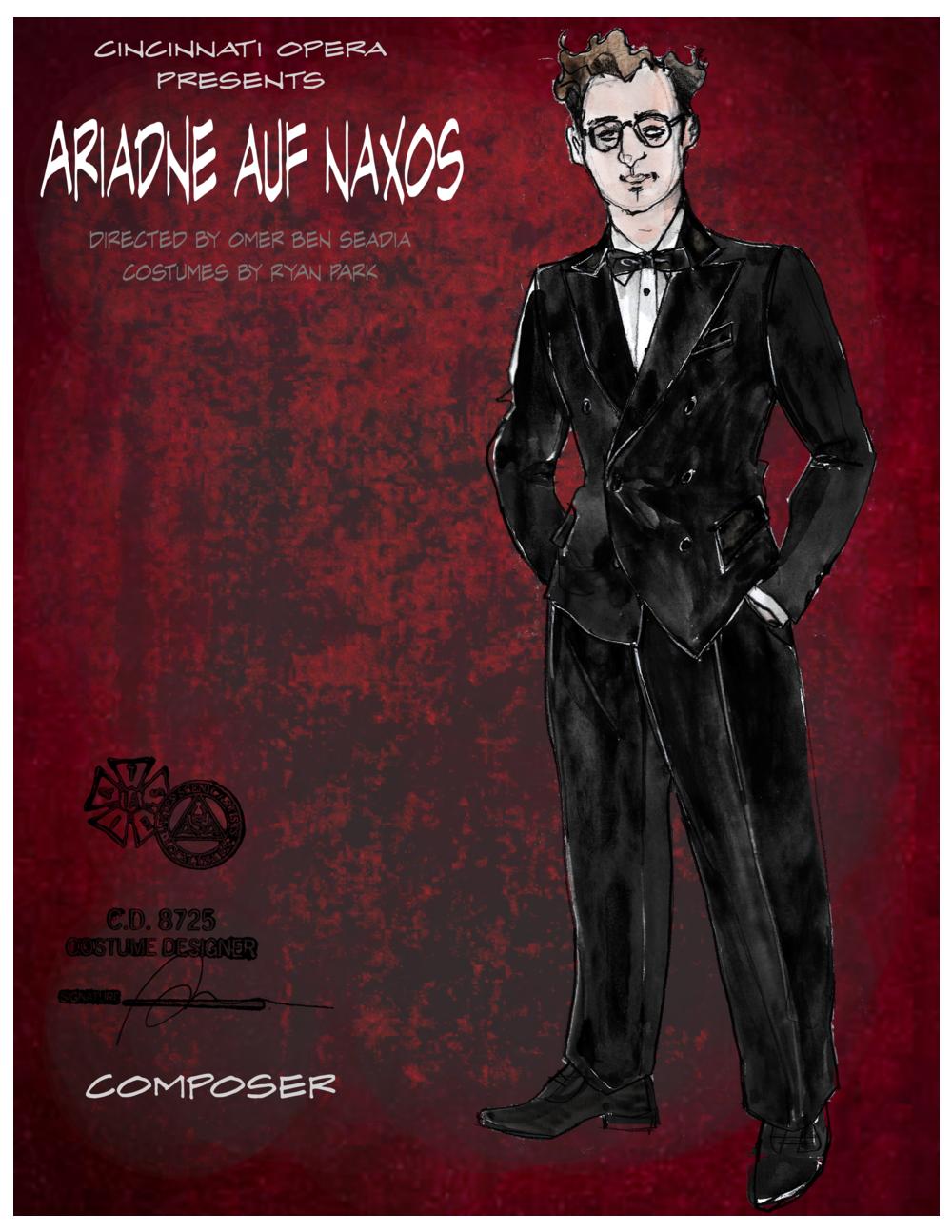By Evans Mirageas
Many of us have probably seen 42nd Street, A Star Is Born, or Noises Off. Each show takes us behind the scenes to reveal that the artists who transport us as performers are still humans, with all their faults and foibles. In Ariadne auf Naxos, librettist Hugo von Hofmannsthal and composer Richard Strauss go one step further, by poking gentle fun at themselves as well as their characters.
In creating this second version of their backstage comedy the creative team was making a virtue of necessity. In 1912, the two men were enamored with a plot that blended together a brilliant farce by Molière with operatic elements. The result was a six-hour evening in the theater! While not exactly a flop, the original was simply too unwieldy for most opera houses to present.
Never one to waste a good idea, Strauss recycled some of the incidental music to form a symphonic suite called Le Bourgeois Gentilhomme, after the title of Molière’s original play. In 1916, he and Hofmannsthal took the operatic scene which ended the original evening and expanded it into part two of the work you are about to see. For part one, they expanded an interlude from the original into a full-blown Prologue where we meet the creators and protagonists of the opera—with a twist. The dilemma, presented to two competing troupes of entertainers hired to divert wealthy guests at a dinner party, is that their respective comedy and tragedy must be performed simultaneously. The Vienna premiere of this second version was an instant success.
We meet the headstrong young Composer— certainly a stand-in for the fiery young Richard Strauss—infuriated that his noble sentiments must compete with comedians. And which is more important—words or music? Hofmannsthal battled Strauss for lexical dominance throughout their decades of collaboration. The birdbrained prima donna and the vain heroic tenor both get sent up in the Prologue while the exasperated Composer’s teacher tries to keep peace between the warring factions. The outsize emotions on stage are inspired by the outsize emotions and personalities of creators and performers backstage.
Our production is also inspired by an outsize personality, the “Henry Ford of Radio”: Cincinnati legend Powel Crosley, Jr. The list of Crosley’s inventions and innovations runs to pages, not the least of which was the first mass-market radio in the mid-1920s, the most powerful radio station in the USA (WLW at 500,000 watts), the first refrigerator with shelves in the door, and the first genuinely compact cars. He was also the savior of our bankrupt Cincinnati Reds in 1933—and the list goes on. We’ve removed Strauss and Hofmannsthal’s tale from “the home of the richest man in Vienna” to College Hill, Cincinnati, home to Crosley’s majestic mansion, Pinecroft.
The time period has been updated to the late 1950s, Crosley’s twilight years, when his fortunes were made and most of his dreams fulfilled, a time for him to bask in his accomplishments. While we have not recreated an existing room at Pinecroft, Crosley memorabilia will be in evidence. Crosley was an early friend of Cincinnati Opera. His engineers took WLW microphones to the Zoo in our fourth season in 1923, for what was probably the first-ever live broadcast of a full opera in the USA. Crosley is a fitting stand-in for the slightly eccentric original host of the Ariadne entertainment. You’ve got to smile about a guy who had the pond at Pinecroft dredged into the shape of an arrow so that he could pilot his private planes accurately to the landing strip on his property!
Photo: Radio magnate and inventor Powel Crosley, JR., sits at the control console of his 500,000-watt transmitter at its debut in 1934. WLW had the largest broadcasting station ever built at the time, and it was right here in Cincinnati. Bettmann/Getty Images
Evans Mirageas, The Harry T. Wilks Artistic Director of Cincinnati Opera, is an award-winning record producer, lecturer, interviewer, presenter, and awards panelist.




